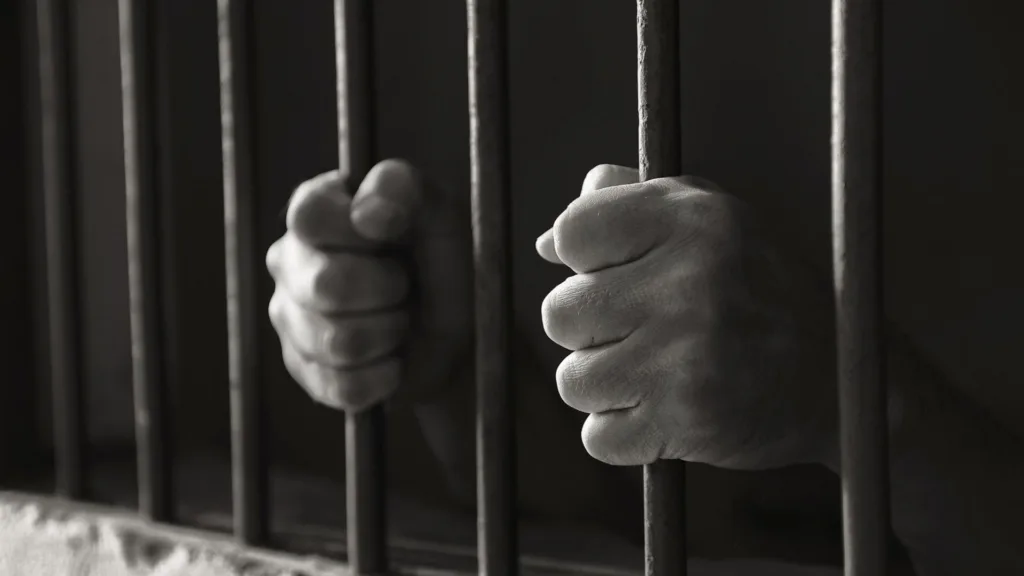Differential opportunity theory is a criminological theory that was introduced by Richard Cloward and Lloyd Ohlin in 1960. This theory posits that individuals who are unable to achieve their goals through legitimate means, such as education or employment, may turn to illegitimate means, such as crime, to achieve their goals. This theory emphasizes the importance of the availability of illegitimate opportunities and the social structure in influencing criminal behavior.
One of the central ideas of differential opportunity theory is the concept of illegitimate opportunity structures. These are social arrangements that proide individuals with opportunities to engage in criminal behavior. According to Cloward and Ohlin, there are three types of illegitimate opportunity structures: criminal, conflict, and retreatist.
Criminal opportunity structures refer to criminal organizations and networks that provide individuals with access to criminal activities such as drug trafficking, theft, and prostitution. Conflict opportunity structures refer to situations where individuals may use violence or intimidation to achieve their goals, such as gang activity. Retreatist opportunity structures refer to situations where individuals may turn to drug abuse or other forms of deviant behavior as a way to cope with their inability to achieve their goals through legitimate means.
Another important aspect of differential opportunity theory is the role of social structure in influencing criminal behavior. According to this theory, individuals who live in neighborhoods with high levels of poverty and crime may be more likely to engage in criminal behavior due to the lack of legitimate opportunities available to them. These individuals may also have greater exposure to and access to illegitimate opportunity structures.
Differential opportunity theory also emphasizes the importance of the individual’s socialization and identity formation in influencing their criminal behavior. The principle of differential identification suggests that individuals are more likely to engage in criminal behavior if they identify with other individuals who engage in criminal behavior.
Overall, differential opportunity theory offers valuable insights into the factors that influence criminal behavior. This theory emphasizes the importance of the availability of illegitimate opportunities and the social structure in influencing criminal behavior. By understanding these factors, policymakers and criminologists can develop effective strategies to prevent and reduce criminal behavior.
The Proposal of the Theory of Differential Opportunity
The theory of differential opportunity was proposed by Richard Cloward and Lloyd Ohlin in 1960. They argued that criminal behavior is not only a result of individual choices, but also a product of the opportunities available to individuals in their social environment. In their theory, they emphasized that individuals who lack access to legitimate opportunities, such as education and employment, may turn to illegitimate means, such as crime, to achieve their goals. They also noted that diffrent subcultures provide varying opportunities for criminal behavior, and that the structure of society plays a role in shaping the opportunities available to individuals. Overall, Cloward and Ohlin’s differential opportunity theory has been a significant contribution to criminology, highlighting the importance of understanding the social context in which criminal behavior occurs.

Opportunity Theory Explained
Opportunity Theory is a criminological perspective that suggests that individuals who want to commit a crime will look for an opportunity or a practical target to do so. This theory proposes that the occurrence of a crime is not only determined by the individual’s motivation or intention, but also by the availability of suitable targets and the absence of guardianship or protective measures. Essentially, this means that the presence of an opportunity for a crime to occur is a critical factor in determining whether it will take place or not. For instance, a poorly lit street or an unguarded building is more likely to attract criminals than a well-lit one with a security guard. Overall, Opportunity Theory prvides a valuable insight into how criminal behavior is influenced by environmental factors and situational circumstances.
Differential Opportunity and Social Disorganization Theory
Differential opportunity theory is a criminological theory that posits that some individuals may have more or fewer opportunities to engage in criminal behavior depending on their social and economic status. This theory suggests that individuals who are socially and economically disadvantaged may have fewer legitimate opportunities for success, such as access to education or well-paying jobs, and therefore may turn to crime as a means of achieving success. In contrast, those who have more opportunities for success may be less likely to engage in criminal behavior.
Social disorganization theory is anoter criminological theory that focuses on the impact of neighborhood characteristics on individual behavior. This theory suggests that neighborhoods with high levels of poverty, unemployment, and crime may lack the social institutions and resources necessary to maintain social order, leading to increased levels of crime and deviance. According to this theory, individuals who grow up in socially disorganized neighborhoods may have fewer opportunities for social and economic success, and may therefore be more likely to engage in criminal behavior.
Both differential opportunity theory and social disorganization theory emphasize the importance of social and economic factors in understanding crime and deviance. These theories suggest that crime is not solely a result of individual characteristics or choices, but is also influenced by broader social and economic conditions. By understanding these conditions and their impact on individual behavior, we may be better equipped to develop effective strategies for preventing crime and promoting social and economic opportunity for all individuals.
Exploring Differential Identification Theory
Differential identification theory is a criminological theory that explains why individuals engage in criminal behavior. According to this theory, individuals are more likey to engage in criminal behavior if they positively identify with others who engage in similar behavior. In other words, if an individual perceives that others who engage in criminal behavior are similar to them in terms of their values, beliefs, and attitudes, they are more likely to engage in criminal behavior themselves. This identification process can occur through a variety of channels, including family, peers, media, and cultural norms. The theory emphasizes the importance of social learning and the role of socialization in shaping criminal behavior. It suggests that reducing criminal behavior requires interventions that focus on changing the social context in which individuals live and altering the cultural messages that support criminal behavior. Overall, differential identification theory provides a useful framework for understanding the complex social processes that underlie criminal behavior.
Differential Opportunity Theory: Arguments Explored
Differential opportunity theory is a criminological perspective that suggests that evryone has an equal opportunity to commit crimes, but not everyone has the same access to the means to do so. This theory proposes that it is not external factors such as poverty or social class that directly lead someone to become a criminal, but rather their access to illegitimate opportunities that are not available to everyone. In other words, it is not necessarily an individual’s motivation to commit a crime that matters, but their access to criminal opportunities. This theory argues that certain individuals or groups may have differential access to opportunities due to factors such as social networks, geographic location, or cultural norms. Therefore, it is something about the person’s circumstances that determines whether they become a criminal or not, rather than inherent personal characteristics.

Exploring Opportunity Reduction Theory
Opportunity reduction theory is a criminological approach that focuses on reducing crime opportunities through various measures. The theory suggests that even individuals who are motivated to commit crimes can be deterred if the opportunities to commit tose crimes are reduced. This approach is based on the idea that crime is not solely caused by individual characteristics or social factors but is also influenced by the environment in which the crime occurs. Therefore, situational crime prevention measures are used to make committing crimes more difficult, risky, or less rewarding. These measures may include increasing the visibility of potential targets, installing security measures, improving lighting in public spaces, or altering the physical design of environments to reduce the opportunities for criminal activity. While opportunity reduction measures may not completely eliminate crime, they can effectively target some of the most problematic forms of crime and contribute to a safer environment for individuals and communities.
Types of Opportunity
When it comes to posting opportunities, there are several types that you can consider. The first type is getting help on projects. This type of opportunity is suitable for those who need assistance in completing a project or task. By posting your project details, you can attract individuals who have the skills and expertise needed to help you achieve your goals.
Another type of opportunity is proposing working groups. If you have an idea or a project that requires a team effort, you can create a working group and invite others to join. This approach can help you find like-minded individuals who share your passion and skills, and who can contribute to your project’s success.
If you have a new product or idea that needs testing, you can create an opportunity to get testers. This type of opportunity is ideal for those who want to gather feedback on their new product or idea before launching it to the public. By getting testers, you can identify flaws and make necessary improvements to your product or idea.
Creating a team to work on an idea is another type of opportunity that you can post. This is suitable for those who have an idea but lack the skills or resources to bring it to life. By posting your idea and inviting others to join your team, you can find individuals who can contribute their skills, knowledge, and resources to help bring your idea to fruition.
Sharing your expertise or best practices in a particulr field is also a type of opportunity that you can post. This is suitable for those who have a wealth of knowledge in a particular field and want to share it with others. By posting your expertise, you can attract individuals who are interested in learning from you and benefiting from your knowledge and experience.
In summary, there are several types of opportunities that you can post, depending on your needs and goals. Whether you need help on a project, want to create a working group, or share your expertise, posting opportunities can help you achieve your objectives and connect with like-minded individuals.
The Five Roots of Opportunity
As an entrepreneur, it’s essential to identify the roots of opportunity in the market to exploit them successfully. There are five main roots of opportunity that you can leverage to help your business grow and succeed.
The first root is problems that your business can solve. Every day, people face a wide range of problems that they need a solution for, such as finding a faster way to do something, dealing with a health issue, or simplifying a complex process. By identifying a specific problem that your business can solve, you can create a product or service that will attract customers and grow your business.
The second root is changes in law, situations, or trends. Changes in laws or regulations can create new opportunities for businesses to prvide services or products that comply with new legal requirements. Changes in trends or situations, such as an increase in remote work, can also create new opportunities for businesses to offer innovative solutions to meet new needs.
The third root is inventions of totally new products or services. Sometimes, entrepreneurs can identify a completely new product or service that doesn’t currently exist in the market. This can be an exciting opportunity to create something that will disrupt the market and provide value to customers.
The fourth root is competition. While competition can be fierce, it can also create opportunities for entrepreneurs to differentiate themselves and offer unique value propositions to customers. By identifying gaps in the market and offering something that competitors aren’t providing, entrepreneurs can carve out a niche for themselves and build a successful business.
Finally, the fifth root of opportunity is technology advances. Technological advancements are constantly creating new opportunities for businesses to innovate and create new products or services. New technologies can also help businesses operate more efficiently and effectively, reducing costs and increasing profits.
In conclusion, by identifying and exploiting these five roots of opportunity, entrepreneurs can create successful businesses that address customer needs, differentiate themselves from competitors, and take advantage of new trends and technologies.
Opportunity Theories of Crime
There are two main opportunity theories of crime: routine activity theory and the bounded rational choice perspective. Routine activity theory, proposed by Cohen and Felson, suggests that crime occurs when three elements come together: a motivated offender, a suitable target, and the absence of a capable guardian. This theory emphasizes the importance of routine activities and daily patterns in creating opportunities for crime to occur.
On the other hand, the bounded rational choice perspective, proposed by Clarke and Cornish, focuses on the decision-making process of offenders. This theory posits that offenders weigh the potential risks and rewards of committing a crime before making a decision. The theory suggests that if the potential rewards outweigh the potential risks, and if there are low levels of effort required and low levels of risk of getting caught, then the offender is more likely to commit the crime.
Both theories are ueful in understanding the opportunities for crime and can guide prevention efforts. Routine activity theory emphasizes the importance of reducing opportunities for crime by increasing the presence of capable guardians and reducing the availability of suitable targets. In contrast, the bounded rational choice perspective focuses on reducing the potential rewards and increasing the perceived risks of committing a crime.

Exploring Differential Social Organization Theory
Differential social organization theory, also known as the social disorganization theory, is a criminological theory that explains variations in crime rates across different neighborhoods or communities. The theory suggests that crime rates can be influenced by the social organization of a community, including factors such as poverty, racial and ethnic heterogeneity, residential mobility, and family disruption.
According to this theory, communities that lack social organization, such as stable families, strong community networks, and effective social institutions, are more likely to experience higher levels of crime. This is because such communities are characterized by weak social control mechanisms, which make it easier for individuals to engage in criminal activities without fear of punishment.
On the other hand, communities that have strong social organization, such as cohesive families, active community organizations, and effective social institutions, are less likely to experience high levels of crime. This is because the strong social control mechanisms in tese communities make it more difficult for individuals to engage in criminal activities without being caught and punished.
Overall, the differential social organization theory suggests that crime is not simply a result of individual deviance, but rather a product of the social organization of a community. By addressing the underlying social factors that contribute to crime, communities can work towards reducing crime rates and creating safer environments for their residents.
The Main Point of Social Disorganization Theory
The main point of social disorganization theory is to understand how the structural and cultural factors of a community can shape the nature of the social order and lead to differences in levels of crime. This theory posits that communities with high levels of poverty, unemployment, residential instability, and ethnic heterogeneity are more liely to experience social disorganization, which in turn leads to higher crime rates. The theory also emphasizes the importance of community-level factors such as the availability of social networks, the quality of schools, and the effectiveness of local institutions in reducing crime. Overall, social disorganization theory provides a framework for understanding how the social structure of a community can influence patterns of crime and deviance.
Differences Between Differential and Opportunity Cost
Differential cost and opportunity cost are two important concepts in accounting and economics. Differential cost refers to the difference in cost between two or more options or choices. It is used to compare the costs of different alternatives and helps in making decisions based on cost-effectiveness. For example, if a company is considering two different suppliers for a particular material, the differential cost will help them choose the supplier that offers the best value for money.
On the other hand, opportunity cost is the cost of the next best alternative that must be gven up when making a decision. It represents the benefits that are forgone when choosing one option over another. For instance, if a business decides to invest in a particular project, the opportunity cost would be the potential profits that could have been earned if the funds were invested elsewhere.
Therefore, while differential cost is used to compare the costs of different alternatives, opportunity cost is used to determine the benefits that are lost when one alternative is chosen over another. Both these concepts are essential in decision-making, and understanding the difference between them can help individuals and organizations make informed choices that maximize their benefits.
Exploring Differential Oppression Theory
Differential oppression theory is a concept that suggests that the social order is constructed by adults for adults, and that children are expected to conform to this order even if they do not agree with it. The theory believes that this power dynamic between adults and children can lead to the oppression of young people.
In essence, the theory argues that adults hold a disproportionate amount of power in society, which leads to the marginalization of children. This marginalization can take many forms, such as restricting access to education or limiting ther freedom of expression.
The theory also suggests that children are not able to create meaningful social change because they lack the power and resources necessary to do so. As a result, they are forced to accept the social order created by adults, which can perpetuate cycles of oppression.
Overall, differential oppression theory sheds light on the power dynamics between adults and children in society and highlights the need for greater recognition and inclusion of young people in decision-making processes.

Exploring Glaser’s Differential Identification Theory
Glaser’s Differential Identification Theory proposes that an individual may engage in criminal behavior when they identify with other individuals who they perceive as accepting or normalizing such behavior. This identification can be with real or imaginary individuals, and may be influenced by vaious factors including family, peers, media, and culture. Essentially, the theory suggests that individuals may engage in criminal behavior because they identify with and adopt the perspectives of those who they believe accept or condone such behavior. The theory has implications for understanding criminal behavior and developing effective interventions to prevent it, by targeting the social and cultural factors that contribute to differential identification.
Types of Identification
The three basic types of identification in the United States are regional state-issued driver’s license or identity card, the social security card (or the social security number), and the United States passport card. Each of these identification documents serves a different purpose and can be used in various situations.
A driver’s license or identity card is issued by each state and can be used as proof of identity and age. It is commonly used as identification when applying for a job, opening a bank account, or purchasing age-restricted products such as alcohol or tobacco.
The social security card, or the social security number, is issued by the Social Security Administration and is used to track an individual’s earnings and benefits. It is commonly used as identification when applying for government benefits or services, opening a bank account, or obtaining a loan.
The United States passport card is a travel document issued by the U.S. Department of State. It is a wallet-sized card that can be used for land and sea travel between the United States and Canada, Mexico, the Caribbean, and Bermuda. It is ofen used as identification when traveling internationally or when applying for a passport book.
All three of these identification documents are widely accepted and can be used nationwide as a form of identification. It is important to keep these documents secure and to only share personal information with trusted sources.
Conclusion
In conclusion, Cloward and Ohlin’s differential opportunity theory has been a significant contribution to criminology. The theory emphasizes the role of illegitimate means and the influence of social structure on criminal opportunity. The theory suggests that individuals are more likely to commit crimes when they find practical targets or opportunities. Social disorganization theory is closely related to differential opportunity theory, as both suggest that certain areas have more or fewer opportunities for criminal behavior. The principle of differential identification suggests that an individual pursues criminal behavior to the extent that he positively identifies with othes who engage in such behavior. Overall, differential opportunity theory highlights the importance of social structure and opportunity in shaping criminal behavior, and it continues to inform criminological research and policy today.
